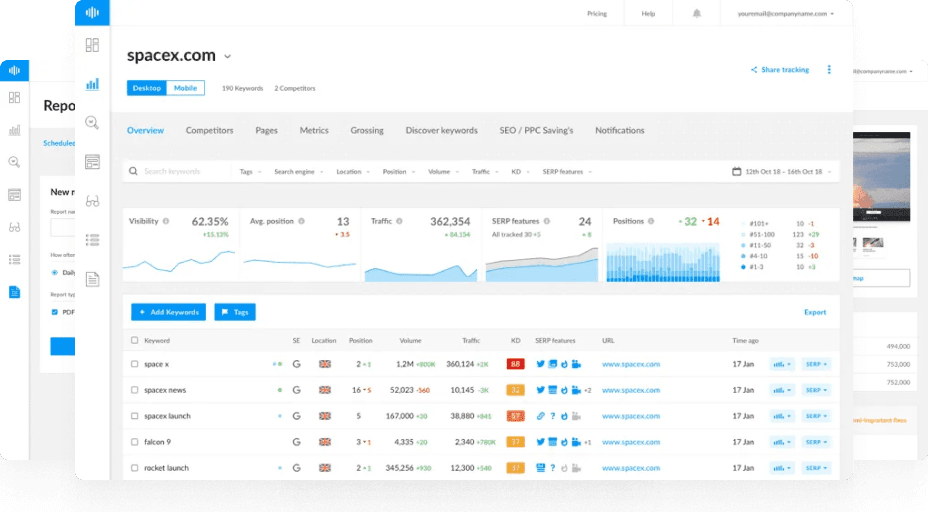What Is Pre-rendering?
Pre-rendering is a technique that creates static, fully rendered versions of web pages ahead of time so that they can be served instantly to users and search engines.
It’s primarily used for JavaScript-heavy websites, ensuring that search engine crawlers see complete HTML content without waiting for JavaScript execution.
Pre-rendering bridges the gap between Client-Side Rendering (CSR) and Server-Side Rendering (SSR) — delivering the SEO advantages of SSR without complex server setups.
How Pre-rendering Works
When a request is made, instead of executing JavaScript in real time, a pre-rendering service generates and caches a fully rendered version of the page.
When a crawler or user requests that page, the cached HTML version is served immediately.
Typical Workflow
- A crawler requests a URL.
- The pre-renderer loads the page, executes JavaScript, and captures the fully rendered output.
- The rendered HTML is stored and reused for future requests.
- Regular visitors still get the dynamic version, while crawlers get pre-rendered HTML.
Why Pre-rendering Matters for SEO
Search engines like Google and Bing can process JavaScript, but doing so consumes rendering resources and time.
If your site relies heavily on JavaScript, key content may be delayed or skipped in indexing.
Pre-rendering ensures that your most important content is available instantly in HTML form — improving discoverability, indexation, and performance.
SEO Benefits
- Instant Crawlability: Crawlers receive readable HTML without running scripts.
- Improved Indexation: Guarantees that all content, metadata, and links are visible.
- Faster LCP & FID: Pages render quicker, improving Core Web Vitals scores.
- Reduced Render Queues: Offloads heavy JavaScript from Googlebot’s rendering pipeline.
Pre-rendering vs SSR vs CSR
| Feature | Pre-rendering | SSR | CSR |
|---|---|---|---|
| Render Timing | Ahead of time | On request | In browser |
| SEO Support | Excellent | Excellent | Limited |
| Performance | Fast (cached) | Moderate | Slower initial load |
| Complexity | Low | Medium–High | Low |
| Best For | Static or semi-static content | Dynamic pages | Interactive apps |
Common Pre-rendering Tools
- Rendertron – Open-source rendering solution by Google.
- Prerender.io – Commercial service for serving pre-rendered pages to bots.
- Netlify Prerendering – Built-in static rendering for Netlify sites.
- Cloudflare Workers – Can serve pre-rendered content at the edge.
Implementation Example
For a JavaScript SPA hosted on Node.js:
const express = require('express');
const prerender = require('prerender-node');
const app = express();
app.use(prerender.set('prerenderToken', 'YOUR_TOKEN'));
app.use(express.static(__dirname + '/public'));
app.listen(3000);
This ensures that when crawlers like Googlebot or Bingbot request a page, they’re automatically served a pre-rendered version.
Best Practices
1. Pre-render Only Key Pages
Focus on important pages such as home, category, and product pages that drive the most traffic and visibility.
2. Set Cache Expiry
Rebuild pre-rendered content periodically to keep data fresh and prevent outdated information from being served.
3. Include Structured Data
Embed schema.org markup directly in your pre-rendered HTML to enhance eligibility for rich results and improve semantic clarity.
4. Validate Output
Compare “View Page Source” and “Inspect Element” to confirm that both show consistent, complete content visible to crawlers.
5. Monitor with Ranktracker
Use Ranktracker’s Web Audit Tool to ensure pre-rendered content is being indexed correctly and performing well in SERPs.
Testing Pre-rendering
Use these tools to verify implementation and SEO impact:
-
Google Search Console → URL Inspection Tool
Check “Rendered HTML” for full content visibility and rendering completeness. -
Lighthouse / PageSpeed Insights
Compare performance metrics before and after pre-rendering to measure improvements in Core Web Vitals. -
Fetch as Google (Legacy Tool)
Confirm what version of your page (rendered or source) is visible to Googlebot.
Summary
Pre-rendering ensures that both users and crawlers see complete, SEO-friendly versions of your pages.
By serving fully rendered HTML ahead of time, it improves crawlability, indexation speed, and Core Web Vitals — especially for JavaScript-heavy websites.
It remains one of the most effective technical SEO strategies for balancing site performance, visibility, and scalability in modern web architectures.
